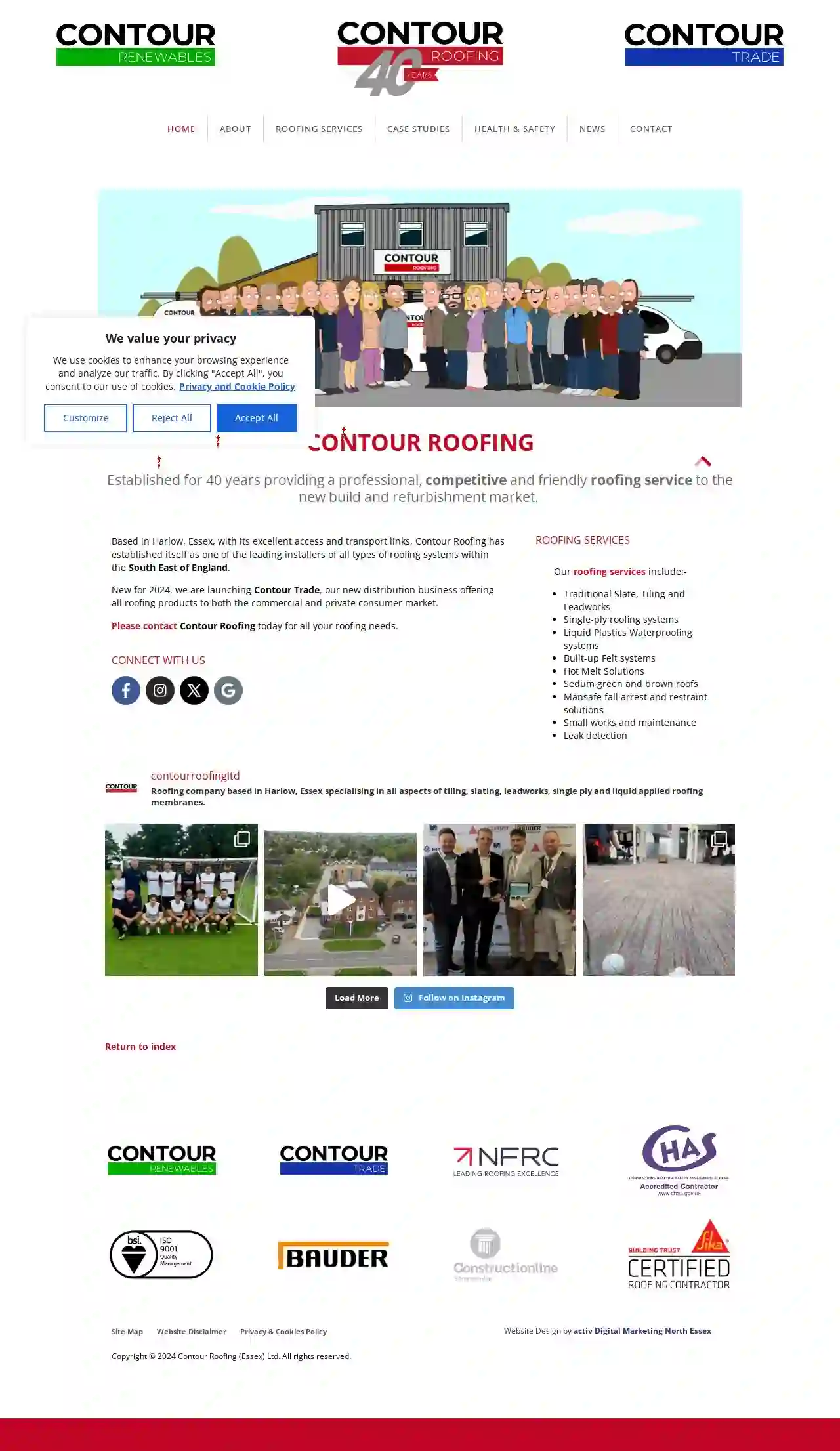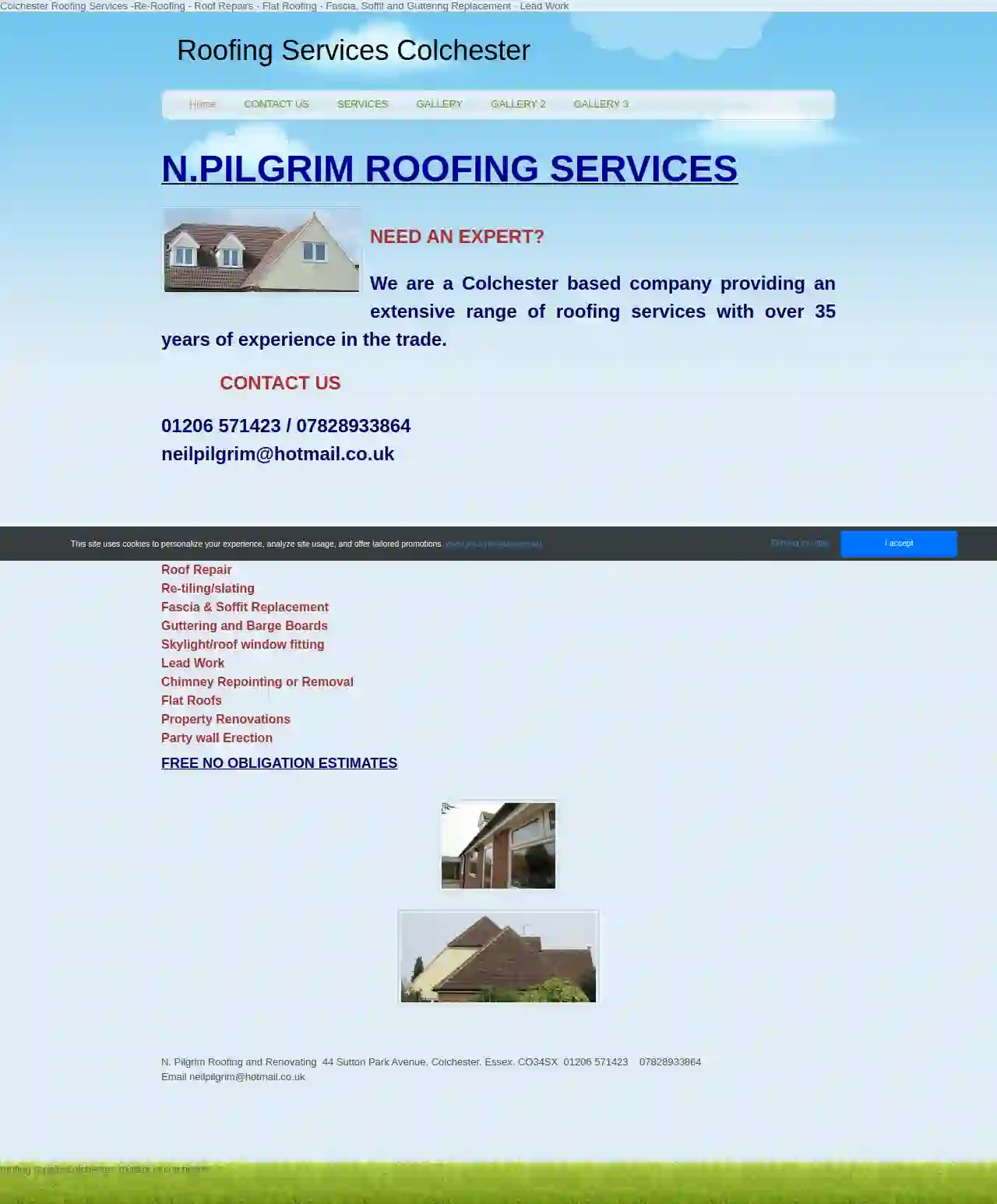Roofing Companies Brightlingsea
Find top Roofing Companies in Brightlingsea
Get up to 3 Roofers quotes for your project today! Compare profiles, reviews, accreditations, portfolio, etc... and choose the best deal.

Westridge Roofing
52 reviewsColchester, CO4, GBWestridge Roofing Essex is a professional and reliable roofing company with over 20 years of experience in the industry. We specialize in providing a wide range of roofing repairs and maintenance services to both domestic and commercial clients in Colchester, Essex. Our team of highly skilled and experienced roofers are committed to delivering outstanding quality workmanship and customer service. We pride ourselves on using only the highest quality materials and techniques to ensure that all our work is completed to the highest standard. We are Trust-a-trader approved, giving you peace of mind that you are dealing with a reputable and trustworthy company. Why choose Westridge Roofing? Vast experience and expertise in all types of roofing Highly skilled and qualified roofers Commitment to providing outstanding quality workmanship Competitive prices Excellent customer service Trust-a-trader approved
- Services
- Why Us?
- Our Team
- Testimonials
- Gallery
Get Quote
High Tech Membrane Roofing Ltd
4.647 reviews30 Linden Road, Linden House, Benfleet, SS7 4BA, GBHigh Tech Membrane Roofing is a leading provider of membrane flat roofing solutions. With a lifetime guarantee on all waterproofing products, we offer peace of mind for our customers. Our guarantee carries a 25-year full product and labour warranty, fully transferable on request. We have a team of experienced professionals who can help you turn your flat roof into your biggest asset. Protect your building and enhance the look with membrane flat roofing. Recent installs showcase our expertise in commercial and domestic flat roofing solutions.
- Services
- Why Us?
- Accreditations
- Our Team
- Testimonials
- Gallery
Get Quote
PITCH PERFECT ROOFING
4.817 reviewsGreen Lane, Pilgrims Hatch, Flat 5 Meadowview, Brentwood, CM15 9RR, GBPitch Perfect Roofing is a family-run roofing business based in Brentwood, Essex. With over 11 years of experience, we provide a comprehensive range of roofing services for both pitched and flat roofs. From new builds and re-roofs to repairs and maintenance, we've got you covered. We pride ourselves on our commitment to quality, using only the best materials and ensuring all our work comes with a full warranty. Our team of trusted and experienced roofers is dedicated to providing a professional and reliable service, and we're always happy to offer free quotes. We're available 7 days a week to answer your queries and provide expert advice on all your roofing needs.
- Services
- Why Us?
- Testimonials
- Gallery
Get Quote
The Chelmsford Roofing Company Ltd
51 reviewsGBWelcome to The Chelmsford Roofing Company Ltd. Here at the Chelmsford roofing company, we offer the complete roofing solution. Be it a small repair or gutter clean, to a complete new roof, we can solve all of your roofing needs. The director, Jim Daley has over 12 years experience in the roofing trade so rest assured your roof will always be in good hands. We offer a wide range of roofing services, check out our services page for more details.
- Services
- Why Us?
- Our Team
- Gallery
Get Quote
Contour Roofing Limited
4.611 reviewsGBContour Roofing is a well-established roofing company based in Harlow, Essex, with over 40 years of experience serving the new build and refurbishment market in the South East of England. We pride ourselves on providing a professional, competitive, and friendly service, becoming one of the leading installers of various roofing systems in the region. In 2024, we're excited to launch Contour Trade, our new distribution business supplying roofing products to both commercial and private consumers. Whether you need traditional roofing, single-ply systems, liquid plastics, or other specialized solutions, Contour Roofing is your trusted partner for all your roofing needs.
- Services
- Why Us?
- Gallery
Get Quote
J Rose Roofing Services Ltd
36 Straight Rd, Boxted, CO4 5HN, GBWith years of experience and a commitment to providing only the very best service. J Rose Roofing pride ourselves on the high quality of all of work undertaken. Be it general roof repairs, leadwork, facias & gutterings and more, we aim to provide each and every one of our clients with the same standards of excellence.
- Services
- Why Us?
- Testimonials
- Gallery
Get Quote
Blainey Roofing
Basildon, GBBlainey Roofing has been serving the Essex, Kent and East London area since 1958. We are a team of experienced professionals who tackle everything from complex large projects to smaller scale jobs. We are committed to excellence and go the extra mile to make sure our clients are completely satisfied with our work. We offer a wide range of contracting services to handle all our clients needs. Full roof removal and replacement, Gutter repairs, roof cleaning, Tile and slate repairs. Flat roofs, EPDM, and traditional felt roofing. Ridge removal and replace. Verge repair, chimney stack refurbishment, lead work, flashings and aprons, etc. At Blainey Roofing, our clients are our number one priority and we go the extra mile to make sure they’re completely satisfied. We are fully prepared to tackle even the most complex projects and stand by the exceptional quality of our work. Call us today to schedule a consultation.
- Services
- Why Us?
- Our Team
- Gallery
Get Quote
N Pilgrim Roofing Services
4.84 reviews44 Sutton Park Avenue, Colchester, CO34SX, GBN. Pilgrim Roofing and Renovating is a Colchester based company providing an extensive range of roofing services with over 35 years of experience in the trade. We specialise in: * Roof Repair * Re-tiling/slating * Fascia & Soffit Replacement * Guttering and Barge Boards * Skylight/roof window fitting * Lead Work * Chimney Repointing or Removal * Flat Roofs * Property Renovations * Party wall Erection All our work is carried out to the highest standard with great attention to detail. All new replacement work guaranteed. Please contact us for a free, no obligation estimate.
- Services
- Why Us?
- Gallery
Get Quote
A1 Roofing Brentwood
15a St Thomas Rd, Brentwood, CM14 4DB, GBA1 Roofing Brentwood is a roofing company based in Brentwood, Essex, serving the South East of England. They offer a wide range of roofing services, including commercial roofing, roof waterproof membrane, industrial roofing, domestic roofing, chimney flashing, and roof insulation. They are available 24 hours a day, 7 days a week, and serve clients in locations such as Brook Street, Bentley Brentwood, West Horndon, Warley Essex, Little Warley, Ingrave Brentwood, Herongate, Great Warley Essex, East Horndon, Childerditch Brentwood, Hutton Mount, Hutton Essex, Padham's Green, Havering's Grove Brentwood, Navestock Heath and Pilgrims' Hatch. They also cover more of the region on the outskirts of Brentwood and Essex. Brentwood is an industrial town in Essex in the South East of England.
- Services
- Why Us?
- Gallery
Get Quote
Exall Roofing Ltd
512 reviewsUnit 32a Little Boyton Hall Farm, Boyton Hall Lane, Roxwell, CM1 4LN, GBYour local roofing experts, Exall Roofing, have been providing reliable and trustworthy roofing services for over 35 years since their establishment in 1984. They specialize in a wide range of roofing solutions, from emergency roof repairs to full-scale warehouse roof replacements. Their team is dedicated to delivering high-quality workmanship and customer satisfaction, ensuring your roofing needs are met with expertise and care.
- Services
- Why Us?
- Gallery
Get Quote
Over 12,314+ Roofers on our directory
Our roofing pros operate in Brightlingsea and surrounding areas!
Roofyng.co.uk has curated and vetted the Best Roofers arround Brightlingsea. Find the most reliable pro today.
Frequently Asked Questions About Roofing Companies
- Metal roofs: Reflect sunlight, reducing cooling costs.
- Tile roofs: Offer thermal mass, regulating temperature.
- Cool roofs: White or light-colored roofs with high solar reflectance.
- Green roofs: Vegetated roofs providing insulation and reducing heat absorption.
- Ventilation: Soffit vents provide intake ventilation, allowing fresh air to enter the attic and regulate temperature and moisture.
- Aesthetics: It creates a finished look to the roof's underside.
- Pest Control: A properly sealed soffit prevents pests like birds and squirrels from nesting in the attic.
- Choose Reflective Roofing Materials: Opt for light-colored shingles or metal roofing that reflects sunlight and reduces heat absorption.
- Install Proper Attic Insulation: Adequate insulation prevents heat loss in the winter and heat gain in the summer.
- Ensure Adequate Ventilation: Proper attic ventilation allows hot air to escape, reducing cooling costs and extending the lifespan of your roof.
- Consider a Radiant Barrier: In hot climates, a radiant barrier installed in the attic can reflect heat away from the roof, further reducing cooling needs.
- Asphalt Shingles: Popular, affordable, available in various styles (3-tab, architectural, etc.)
- Metal Roofing: Durable, long-lasting, energy-efficient, available in panels, shingles, or tiles.
- Tile Roofing: Clay, concrete, or slate; known for longevity, durability, and aesthetic appeal.
- Flat Roofing: EPDM rubber, TPO, PVC, modified bitumen, or built-up roofing (BUR).
- Slate: Natural stone, extremely durable, expensive, requires expert installation.
- Wood Shakes or Shingles: Natural wood, aesthetically pleasing, requires regular maintenance.
What are some energy-efficient roofing options?
What is a soffit, and why is it important for my roof?
How can I make my new roof more energy-efficient?
What are the different types of roofing materials?
What are some energy-efficient roofing options?
- Metal roofs: Reflect sunlight, reducing cooling costs.
- Tile roofs: Offer thermal mass, regulating temperature.
- Cool roofs: White or light-colored roofs with high solar reflectance.
- Green roofs: Vegetated roofs providing insulation and reducing heat absorption.
What is a soffit, and why is it important for my roof?
- Ventilation: Soffit vents provide intake ventilation, allowing fresh air to enter the attic and regulate temperature and moisture.
- Aesthetics: It creates a finished look to the roof's underside.
- Pest Control: A properly sealed soffit prevents pests like birds and squirrels from nesting in the attic.
How can I make my new roof more energy-efficient?
- Choose Reflective Roofing Materials: Opt for light-colored shingles or metal roofing that reflects sunlight and reduces heat absorption.
- Install Proper Attic Insulation: Adequate insulation prevents heat loss in the winter and heat gain in the summer.
- Ensure Adequate Ventilation: Proper attic ventilation allows hot air to escape, reducing cooling costs and extending the lifespan of your roof.
- Consider a Radiant Barrier: In hot climates, a radiant barrier installed in the attic can reflect heat away from the roof, further reducing cooling needs.
What are the different types of roofing materials?
- Asphalt Shingles: Popular, affordable, available in various styles (3-tab, architectural, etc.)
- Metal Roofing: Durable, long-lasting, energy-efficient, available in panels, shingles, or tiles.
- Tile Roofing: Clay, concrete, or slate; known for longevity, durability, and aesthetic appeal.
- Flat Roofing: EPDM rubber, TPO, PVC, modified bitumen, or built-up roofing (BUR).
- Slate: Natural stone, extremely durable, expensive, requires expert installation.
- Wood Shakes or Shingles: Natural wood, aesthetically pleasing, requires regular maintenance.